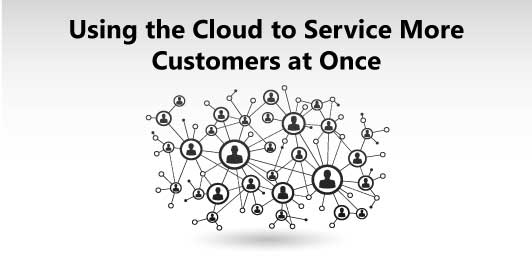Big data has permeated every aspect of our digital lives. As consumers, we don’t really recognize big data in practice, but we certainly notice the benefits—the convenience of things like real-time traffic, weather, and navigation applications, all the way to the aggregation and reporting of real estate listings and median pricing. And there are hundreds of other examples.
With all that data comes a heavy demand on infrastructure and traffic bandwidth for every business. Computing power and traffic handling are expensive to manage in an on-premises environment. These ever-growing needs drive development teams to look to the cloud for solutions.
Using Cloud Services to Manage Infrastructure and Traffic
When applications are designed for deployment in a cloud environment, the service provider manages infrastructure and traffic demand. This leaves the business free to develop applications without on-premises limitations. Still, teams seek ways to make data collection and throughput faster—as close to real-time as possible.
One technique for optimizing data collection is the use of a microservices architecture. This term is used to describe a particular way of designing software applications as suites of independently deployable services.
While there are many considerations in using this architectural style, there are certain common characteristics—organization around business capability, automated deployment, intelligence in the endpoints, and decentralized control of languages and data.
With a microservices architecture coupled with a cloud-based Platform-as-a-Service (PaaS) environment such as Microsoft Azure, large tasks—such as enabling the collection of data from disparate sources—are broken down into smaller engines and deployed on virtual server nodes horizontally. These smaller parts are identical to each other and are built to perform only one task in the most efficient way possible. This moves traffic and connectivity concerns to the cloud provider and allows faster collection of data. The near real-time ability to handle more requests at once allows more users to connect to the service.
Traffic Demand and Scale Handled in Near Real-Time
Traffic demand is effectively a non-issue in a microservices environment. Since the microservices are identical and horizontally deployed, they’re activated only as traffic demand requires them. This is a more stable experience for users, and allows the business to be able to track cloud costs directly to user demand.
The first step in developing in a microservices environment is having a firm understanding of the entire business need for the application. From there, it’s easy to see exactly what parts of the application benefit from a microservices approach to managing scale and traffic demand. This allows the business to control costs at a more granular level, using the on-demand scale features for only those application modules that require it.
Plan to Reduce Complexity
One of the issues that can hinder a business new to microservices is complexity. With so many small engines connecting to a central application, it’s easy for that application to become unnecessarily complex over time.
When deciding which services to break down into microservices, care must be taken to streamline the host application at the same time. Microservices should have a balance between its utility and its required overhead—communications, maintenance, etc.
Standardizing the access points of the main application can reduce complexity. An easy example of this is the Internet itself. The Internet has retained essentially the same access protocols between browser and application resources over the last 20 years. During that time, it grew from 26 million pages in 1998 to around 60 trillion individual pages by 2015 without the need to change its access protocols.[1] This is the best illustration that the complexity inherent in traditional monolithic software systems can be overcome.
Expertise to Lead the Way
Though the business case for a microservices approach is an easy one to make, in practice, many businesses face a barrier to entry in the lack of internal expertise. Understanding what parts of an application need the scale afforded by the microservices while at the same time being able to minimize the complexity risk is a difficult task that only comes with experience.
With time-to-market a major factor in the success of any application, there isn’t time for experimentation or on-the-job learning. That’s where an experienced eye from outside is very beneficial.
Here at RBA, we can help your business develop a roadmap for microservices innovation. We will spend the time needed to get to know your business and identify the parts of your applications that would benefit from a microservices development approach, and keep the pathway clean to allow for future growth and development.
When it comes to architecting applications for the Cloud, there are multiple options. Learn more by downloading RBA’s white paper, Architecting and Migrating Systems for the Cloud.
Ready to take the next step with Microsoft Azure? RBA is here to help provide expertise and assistance on your journey to the Cloud. Contact us today!
[1] Alpert, Jesse; Hajaj, Nissan. “We knew the web was big”. Official Google Blog. Google.com.






